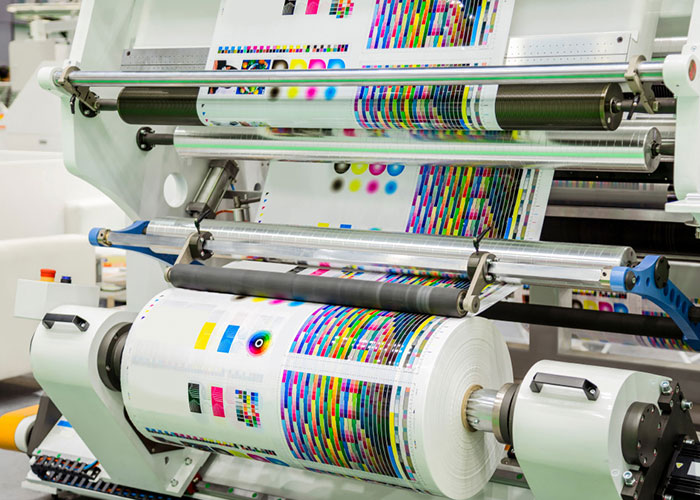
Every product requires a specific type of packaging. This leads to creating specific roller coverings for the production of those packaging materials.
HMSU provides the right technology and covering that enables the creation of the perfect packaging, such as paper bags, cardboard boxes.
HMSU, benefiting from the years of experience of its partners Hannecard & Mitex, offers the right technology and covering for every kind of production process:
- Rotogravure
- Lamination and Coating
- Label Printing
- Cardboard
- Rotogravure
- Rotogravure is a printing process used in the packaging industry to produce high-quality images and text on various substrates such as paper, plastic, and aluminium foil. This printing process uses a cylinder with tiny cells etched into its surface to transfer ink onto the substrate.
- The rotogravure printing process is widely used in the packaging industry because it allows for precise colour registration and the ability to print at high speeds. This makes it ideal for printing high-quality images and text on packaging materials such as flexible packaging, labels, and cartons.
- In rotogravure printing, the printing cylinder is engraved with tiny cells, which are filled with ink during the printing process. The substrate is then pressed against the cylinder, and the ink is transferred onto the substrate. The cylinder is rotated continuously, allowing for high-speed printing.
- Rotogravure printing is commonly used for printing on flexible packaging materials such as plastic films and laminates, as well as on labels, cartons, and other types of packaging. It is known for its high-quality results, vibrant colours, and ability to produce sharp and fine details.
- We, at HMSU Rollers provide high-quality Rotogravure printing. Contact us today for details.
- Lamination and Coating
- Lamination and coating are two common finishing techniques used in the printing industry to enhance the durability, appearance, and functionality of printed materials.
- Lamination is the process of applying a thin layer of plastic film to a printed surface, which provides a protective coating that helps to prevent the ink from fading or rubbing off. Lamination can also add a glossy or matte finish to the printed surface, giving it a more professional and polished look. This process is commonly used in printing high-quality business cards, postcards, menus, and other materials that require a durable and attractive finish.
- Coating is the process of applying a thin layer of varnish or other coating material to a printed surface, which can help to protect the ink from fading or rubbing off, as well as improve the appearance of the printed surface. Coating can also add a glossy or matte finish to the printed surface, similar to lamination. However, unlike lamination, coating does not provide as much durability or protection against wear and tear.
- There are several different types of coatings used in printing, including aqueous coatings, UV coatings, and varnishes. Aqueous coatings are water-based and provide a smooth, matte finish, while UV coatings are cured using ultraviolet light and provide a glossy, high-shine finish. Varnishes are oil-based and can provide either a matte or glossy finish, depending on the type of varnish used.
- In summary, lamination and coating are both finishing techniques used in printing to enhance the durability, appearance, and functionality of printed materials. Lamination provides a more durable and protective finish, while coating primarily improves the appearance of the printed surface. Both techniques can add a glossy or matte finish to the printed surface, depending on the desired look and feel.
- Label Printing
- Label printing is a process of printing labels that are used to identify, describe or provide information about products, packages or containers. Labels are widely used in various industries, including food and beverage, pharmaceuticals, cosmetics, and retail.
- There are various techniques used in label printing, including digital, flexographic, offset, and letterpress printing. Each of these techniques has its advantages and limitations, and the choice of the printing technique depends on the specific requirements of the label design, the printing volume, and the available budget.
- Cardboard
- Cardboard is a popular material used in the printing industry for packaging, point-of-sale displays, signage, and other applications. It is a versatile and cost-effective material that offers a range of benefits for printing applications.
- One of the primary advantages of cardboard in printing is its ability to support high-quality printing.
- Through its partners, HMSU also offers solutions for covered sleeves for Rotogravure, Lamination & Coating.
